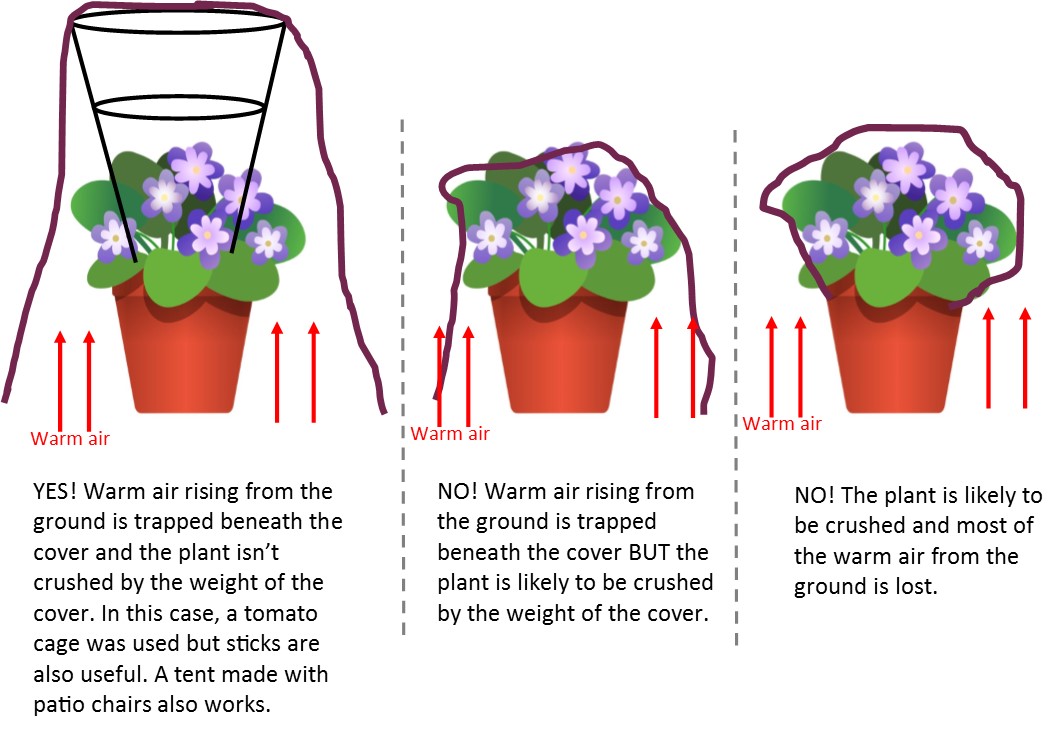First of all, keep an eye on the weather forecast. There are plenty of websites, apps, and news broadcasts to make it easy to get the forecast. If the temperatures will be dipping down below the freezing point of water (32 degrees Fahrenheit), you should consider protecting your plants.
That 32-degree mark is really just an indication of the possibility of a freeze. Low-lying areas might get colder due to cold air settling. The temperature might dip down to 32 but not stay there for long enough to cause freezing. If the temperature is between 29 to 32-degrees, it’s considered a frost. Tender annuals, which are usually tropical plants, and many vegetables will be damaged or killed and some hardier plants will have cosmetic damage. When the temp reaches 25-28 degrees, that’s considered a moderate freeze. In addition to damaging annual plants and vegetables, many perennials and deciduous shrubs will lose their new leaves to the freeze. Extensive damage to perennials, trees and shrubs occurs when then temp drops below 25. While this is rarely fatal to the plant, spring flowers and fruit are often lost and it’s a set-back to the growing season for the plants.
When you see that frost is in the forecast, take preemptive measures. It’s better to find you unnecessarily covered the plants, than to have to clean up mushy, frozen foliage. Here are a few strategies to help your plants survive the cold:
- Water. Damp soil warms up in the day and can keep the air above it warmer by up to 5 degrees. This is a great strategy if the forecast is for a light frost AND you can water in the morning or early afternoon so that there isn’t water on the leaves of the plants which could cause more damage.
- Cover the plants. A woven fabric or commercial row-cover is the most effective, but you can use bed sheets if you don’t have anything else. Be careful not to let the plants be crushed by either a heavy fabric or snow load.
- Manage the mulch and don’t be too intent on an early garden clean-up. A thick layer of mulch or some other garden debris such as leaves insulate the soil. This insulation layer means the ground warms up slower (keeping plants dormant until the weather is more stable) and holds the warmth around the crown of emerging perennials and protects them from snow load, too. So, if you never finished garden clean-up last fall (like me), just say you intentionally left it for spring frost protection!



